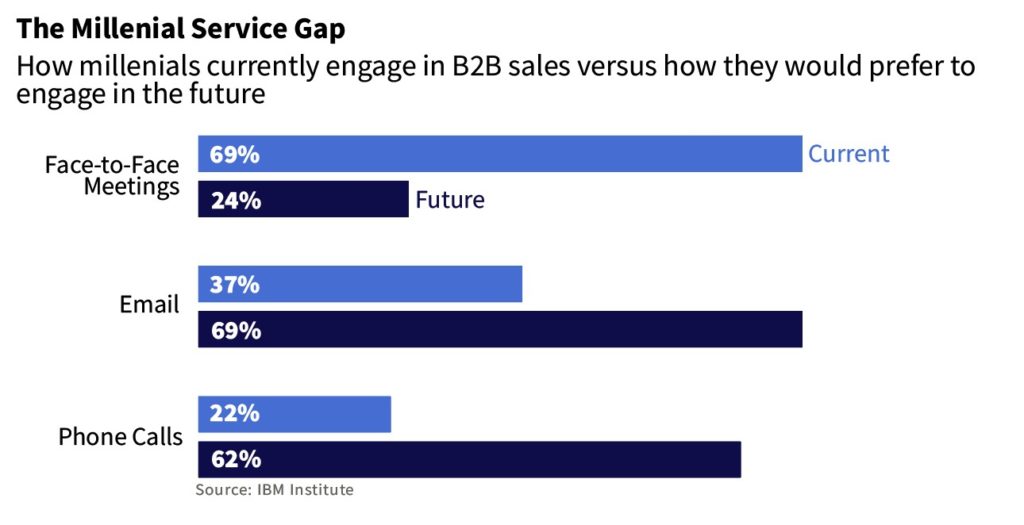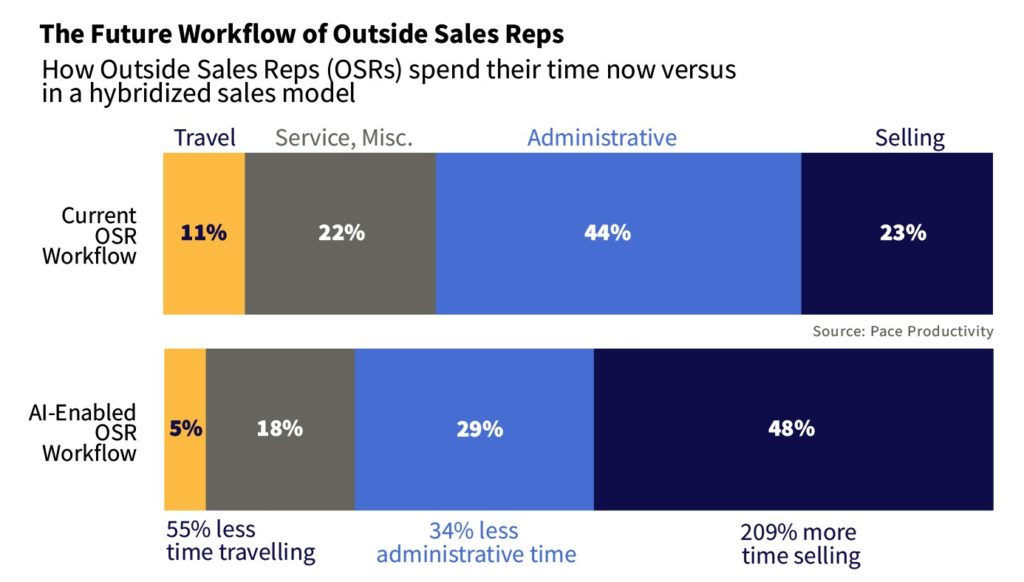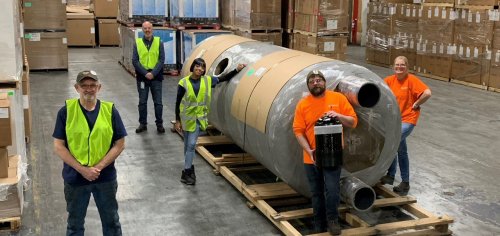COVID-19 has dramatically changed the way distributors sell. This disruption has most profoundly affected the way outside sales representatives (OSRs) operate: More than 90% of B2B companies have shifted to a virtual or hybridized sales model, according to a recent McKinsey report. This begs a hard question: Do OSRs have a future in distribution?
Being “prematurely” pulled out of the field is the best thing that could have happened to OSRs. In recent years inside sales reps (ISRs) have eclipsed these travelling salespeople. However, this massive market disruption gives distributors an opportunity to reimagine the OSR workflow and toolkit.
These reps are now in position to play a key role in distributor revenue recovery plans. This change may not have been planned, but that doesn’t mean it won’t be beneficial for distributors and OSRs alike.
Endangered OSRs
OSRs have been under pressure throughout the last decade. In 2013, the Harvard Business Review published a series of articles explaining why companies were preferencing ISRs over OSRs.
In 2017, a Forbes article revealed that large companies were further attempting to reshape their workforces. While inside selling already accounted for 28.8% of sales, companies were aiming to increase the ISR jobs to over 40%. As companies created more and more ISR positions, many OSRs were pulled out of the field.
Even existing OSR jobs were changing. The same Forbes article also revealed that OSRs were spending 45% time selling remotely, an 89% increase from their remote selling time in 2013. Forbes attributes this change to technology, explaining, “The technology and automation that rules the inside sales world can streamline and accelerate the sales interactions that leverage the power of face-to-face communication.” When the right tools are used to facilitate conversations, OSRs can still serve customers and drive sales remotely.
In short, the elimination or redesigning of the OSR role is not a new phenomenon. Distributors have been redesigning their sales structures to feature more inside sales and less outside sales. Plus, the remaining outside sales teams have been shifting toward more and more remote selling. Thus, when COVID-19 recently forced OSRs out of the field, it was not creating a new market force so much as completing a transition that was already underway. For distributors, this may be very good news.
Meeting New Customer Demands
COVID-19 has not just changed the way distributors sell, it has also changed how their customers buy. Whereas many customers may have previously preferred face-to-face selling, COVID-19 has forced most buyers to accept remote conversations as a viable purchase method.
Moreover, this involuntary shift toward remote selling may actually help distributors connect with their future customers. In recent years, distributors have struggled to meet the diverse needs of baby boomers, Gen X and millennials.
For example, in a 2014 IBM Institute for Business Value Survey, 69% of millennials said they engaged in face-to-face meetings during a sales cycle. However, only 24% of millennials said they would prefer to buy via face-to-face interactions. At the same time, millennials reported that while emails and phone calls were involved in 37% and 22% of sales cycles, they would prefer these channels to be utilized 69% and 62% of the time, respectively.

Millennials – a demographic that constitutes more of distributor’s customer base every day – have a clear preference for remote buying. Yet, distributors have clearly not transitioned enough to meet these customer needs. While COVID-19 has certainly damaged distributors in many ways, its huge silver lining is that it may provide enough impetus for distributors to finally change. By making OSRs truly relevant to customers, distributors can connect with an underserved generation and create critical customer relationships that will pay off for decades.
The New OSR
In order to transition OSRs effectively, distributors will reimagine their toolkits. When seeking effective OSR tools distributors should get greedy and demand that tools do two things. One, enable OSRs to have more total customer interactions. And two, sell more at every one of those remote interactions.
One of the most exciting things about the transition to remote sales is the new opportunities it opens up. In the old world, OSRs spent hours and hours every week traveling to meet customers. But today, OSRs do not need to spend valuable time on the road or at the airport. Instead, they can take this lost time and turn it into more conversations with customers.

Distributors need to be strategic about how this time is spent though. If outside reps are going to take on more customers and more calls, they’ll need new tools to help. The best technology for the job is a Customer Data Platform (CDP). CDPs can streamline the data-tracking process to greatly reduce administrative efforts by rep. So, in addition to travel time, CDP-equipped reps will also gain back tons of administrative time.
Plus, CDPs move reps way beyond the passive tracking of CRMs or ERPs, and actively help reps structure workflows. Using customer data and advanced AI, CDPs can tell reps who to call and when. This ensures that reps will not only gain time with customers, they’ll know how to use that time well.
Beyond improving OSR workflows, CDPs can also improve the quality of individual customer touches. Today, top CDPs have AI recommendations and automated follow-up systems that can help reps pull off reorders, up-sells and cross-sells. When you combine the great interpersonal skills of trained OSRs and the analytic capabilities of AI, you get satisfied customers and strong sales.
COVID-19 has disrupted the way distributors sell, and put OSRs on the hot seat. However, this is not necessarily a bad thing. A quick transition to remote selling can help distributors reconnect with their audiences and gain market share. But only if they have the right tools. Today’s OSRs need cutting-edge AI assistants to increase both the quality and quantity of customer touches.
If this transition is done correctly, everyone should benefit: OSRs will perform better and enjoy higher commission, customers will happily accept improved service and distributors will gain short-term revenue and long-term loyalty.
Benj Cohen founded Proton.ai to help distributors harness cutting-edge artificial intelligence. He learned about distribution firsthand at Benco Dental, a business started by his great grandfather. Later, while studying Applied Math and Data Science at Harvard University, Cohen saw an opportunity to bring his two worlds together. He’s on a mission to supply distributors with the innovative technology they need to thrive in modern markets.
Related Posts
-
Latest data shows a 36.3% spike in home sales from the same month a year…
-
How to develop a unique sales transformation plan that is specific to your distribution company’s…
-
Industrial & Flow Technologies sales were down 3% compared to sales for the same period…






